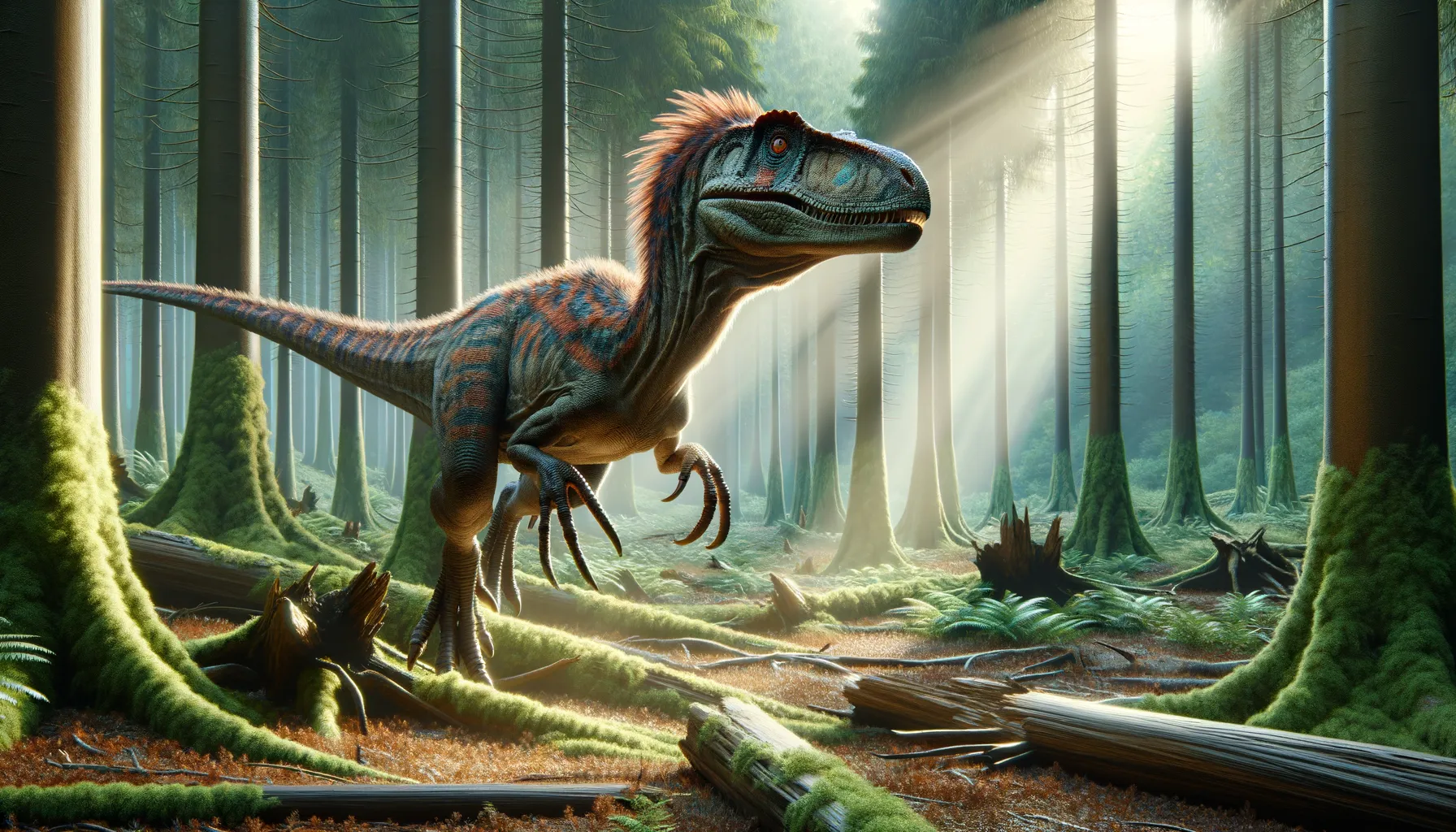
Luanchuanraptor
Swift predator of ancient China.
Period
Cretaceous
Length
Measured approximately 5 meters long.
Height
Stood about 2 meters tall.
Weight
Estimated to weigh around 100 kilograms.
Luanchuanraptor was a fast and agile predator that roamed the forests of Cretaceous China. It belongs to the dromaeosaurid family, which is known for their sickle-shaped claws and keen hunting skills. These dinosaurs might have been feathered, aiding swift movement and possibly aiding in temperature regulation.
Diet
Luanchuanraptor was a carnivore, preying on smaller dinosaurs and possibly scavenging. Its diet likely included small to medium-sized vertebrates that it could overpower with its agility and sharp claws.
Hunting
Hunting likely involved using its speed and agility to ambush unsuspecting prey. The sickle-shaped claws, a signature feature, were used to grasp and immobilize its catch during hunts.
Environmental challenges
Living during the Cretaceous, Luanchuanraptor faced fluctuating climates and competition for food resources. Navigating dense, forested environments required excellent maneuverability. Seasonal changes may have pushed it to adapt its hunting and scavenging behaviors.
Speed
Swift predator with agile movement.
Lifespan
Lived for around 15 to 20 years.
First discovery
Unearthed in Luanchuan County, China, in 2007.
Fun Facts
- Luanchuanraptor is a genus of small, feathered dinosaurs that lived about 125 million years ago during the Early Cretaceous period.
- This dinosaur was named after Luanchuan County in Henan Province, China, where its fossils were discovered.
- Luanchuanraptor belonged to the dromaeosaurid family, which are often referred to as 'raptors' and are known for their speed and agility.
- It had a sickle-shaped claw on each foot, a characteristic feature of many raptors, suggesting it was a predator or scavenger.
- Despite being a theropod, scientists believe Luanchuanraptor might have had feathers, similar to modern birds.
- Luanchuanraptor was relatively small, likely measuring around one to two meters long, making it a medium-sized dinosaur in its family.
- Its discovery in China highlights the diversity of dinosaur species in that region during the Cretaceous period.
Growth and Development
Luanchuanraptor hatched from eggs, growing rapidly in its juvenile stages. Like many theropods, it may have developed sharper hunting skills over time. Maturity likely brought changes in size and muscle mass, enhancing its predatory prowess.
Habitat
It thrived in forested and possibly floodplain environments, offering ample cover for ambush hunting. The terrain was dynamic, presenting both dense vegetation for concealment and open spaces for pursuit.
Interaction with other species
Luanchuanraptor likely competed with other predators for food. Its interactions might have included aggressive encounters or scavenging behaviors alongside larger carnivores. It may have also preyed upon smaller herbivores cohabiting the same region.
Natural lifespan
Typically lived up to two decades in the wild.
Reproduction
Like many dinosaurs, it reproduced by laying eggs in well-hidden nests. Parental care is plausible, possibly guarding the nests against threats. This behavior ensured a higher survival rate for its offspring.
Social behaviour
While primarily solitary, it may have formed temporary groups for hunting or during breeding seasons. Communication could have involved visual displays or vocalizations to establish dominance or attract mates.
Fossil locations
Fossils have primarily been located in Luanchuan County in China. This area has provided insights into the diversity of theropod species during the Cretaceous period. Discoveries here have highlighted the variability within the dromaeosaurid family.
